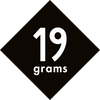The harvesting of the coffee cherries and the processing method say nothing about the roasting profile of a coffee. It is only during the actual roasting process that it is decided whether the coffee will end up in the cup as espresso or filter coffee.
Beans that are to be used for filter coffee are roasted less darkly than espresso beans. This characteristic can be achieved with shorter roasting times or lower roasting temperatures. For this reason, filter coffees tend to have a more harmonious flavor profile, as the flavor notes have better opportunities to develop.
In an espresso roast, the beans tend to be roasted longer, which visually distinguishes them from filter roasts by a darker color. The beans tend to contain fewer acids, as these are broken down in the roasting process. Espresso drinkers are convinced by the strong voluminous body.
Thanks to roasting software, a reference curve can be used to reproduce each roast to guarantee high roast consistency and quality roasting. The roasting profile records the temperature changes measured at different points. On a screen, the data can be observed to keep the deviations as minimal as possible. Only if the batch is within the very tight roasting parameter, the coffee is released for sale.




